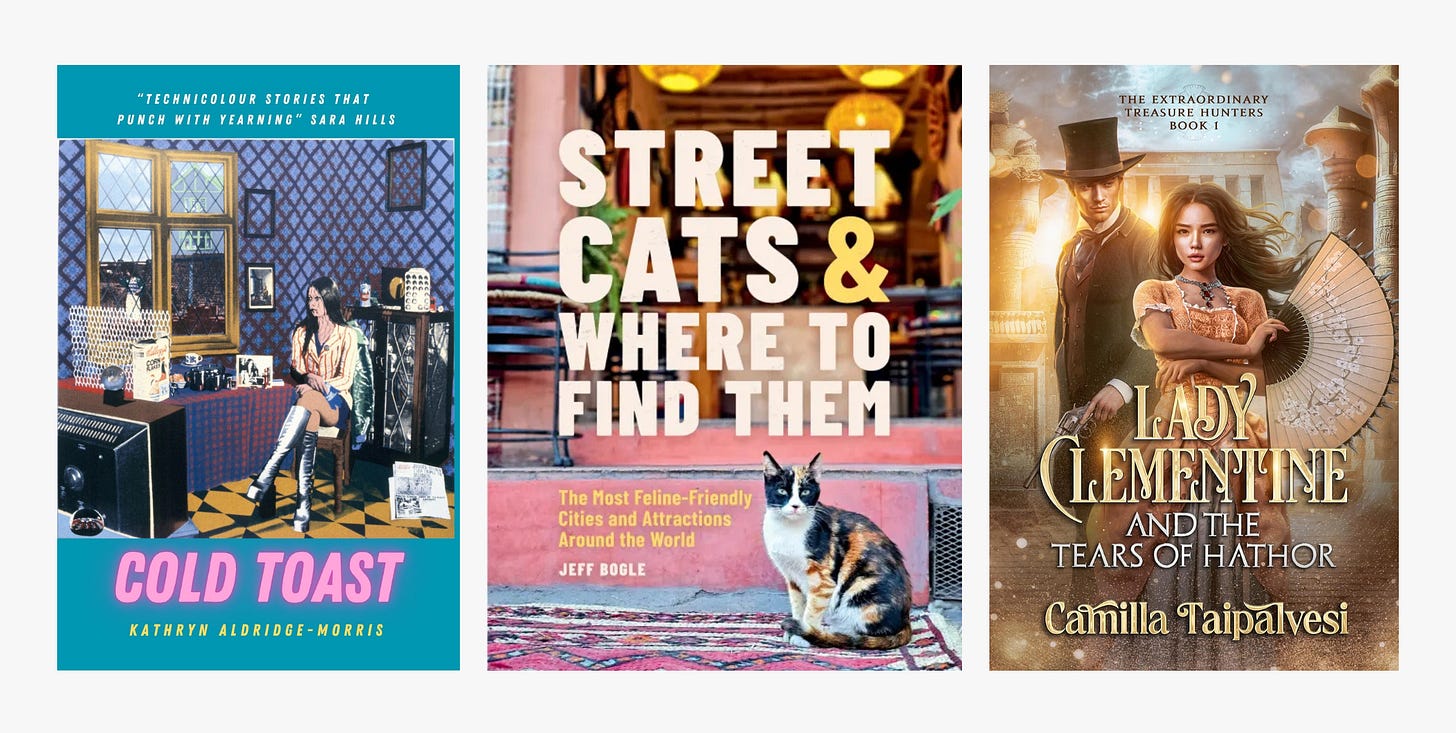Exploring how to ‘fix my fiction’ one month at a time. Writing, editing, reading creative mooching, and making up my own literary lessons as I go.
This month I’ve mostly been thinking about the length of things (stories — get your mind out of the gutter)…
(Girth is a whole different matter, which I touched on in my last post on over/under-description.)
For example, some lengthy dilemmas I’ve dealt with recently:
I had to cut 5 whole pages from my pilot script to meet the requirements for a submission opportunity, which actually led to cutting two whole characters from the episode. Agonising but necessary. A decision I knew in my guts needed to be made, but could only make it when I received the out-loud suggestion from one of my beta readers. And hey, those characters aren’t gone forever — they’ll be introduced in episode 3 instead, where there’ll be more space and focus for them to shine.
I’ve also been noodling over a pile of flash fiction drafts left over from SmokeLong Quarterly’s March Marathon workshop and making decisions about size and shape and purpose. I have 20+ pieces ranging from 100ish words to well over 1000 and am currently riding the love/hate the see-saw process of: “Does this story need more?” or “Does this story need to be honed down?” and “How long should this story actually be?” The answer, of course, is: “How long is a piece of string?” but it’s fun to pretend I might find an answer by staring at the screen for hours. Anyhow. I’ve submitted a couple of them, and even got an acceptance the other day, breaking my strong trend of rejections since January. So perhaps sometimes the answer is: “Fling it out into the ether and see what happens.”
And I’ve been editing another, much older, much faffed-with piece of flash that I’m still not sure is right. Back to the see-saw. Back to the beta reader. But this one I’m not going to rush into flinging out on submission. It’s already been rejected a couple of times and I’m happy to sit on it a while longer. Y’know when it feels like it might be done but then you worry you’ve fucked about with it too much and maybe a previous version was more succinct, but then again what if you extended it by, like, another 1000 words and turned it into something even more complex? Yeah. How long is that string again? I forget.
How to measure a piece of (imaginary) string
A few things that (sometimes) help me figure this stuff out:
Does it have a deadline/word limit? I often use call for submissions as part of the editing process — even if I never end up sending anything out. Gimme parameters and I’ll make something fit. Or I’ll find it wasn’t meant to fit, which will tell me it needs to be a different size. Either way, we learn something.
Have I got to the point yet? Have I said what I wanted to say in this story? Have I even figured out what I’m trying to write about? Have I over-stated it? Does it need a stronger metaphor? Does it need to be plain-spoken? Could it be hidden in the subtext? (This is really where fresh eyes can be golden — to help you figure out if you’re getting your point across in the right way.)
What does my gut say? This one requires duct taping my ego to a chair and bundling my imposter syndrome into a wardrobe and sitting quietly with my grumbly guts for a while. Or maybe going for a walk and talking to myself on a voicenote. Or reading the piece aloud three times in a row. Apparently our literal gut is about 15ft long, but the literary gut is infinitely variable. And it requires a steady hand and a sharp eye to read the measuring tape...
I realise all of that can be summed up as “errr, you’ll know when you know?!” which is not much practical help, but here’s one more thing that can tangibly hone your instincts:
Read like an editor
Because we can get far more objective about stuff when reading someone else’s work. Which is partly why I sometimes struggle to read as much as I used to for pleasure — because I’m unable to turn off the editor part of my brain.
BUT there are useful lessons to be found, whether you loved a book, felt meh about a book, or didn’t even manage to finish the damn thing.
For example, here’s what I’ve been reading* this month and what I’ve learned about length, pace, and perfect timing:
Ghost Mom by T Guzman
A beautiful (tiny!) novel-in-flash all about being not-exactly-alive, grieving, living, and learning how to exist (or not). It’s a gorgeously quiet little thing that I read in two short bursts, standing in my kitchen while I cooked dinner. And then I read it second time a few days later, because my gut wanted to digest it more fully.
I’m always wary when I find myself saying, “I wanted more of this,” because I think actually that’s a very good sign that something is just the right length; when it leaves you thinking about it for a long time afterwards.
The Heart in Winter by Kevin Barry
A western about two ill-fated runaway lovers. I’m loving the balance of richness and efficiency in its language, the cleverly characterful narrative voices, and the constantly surprising turns of phrase.
I’m just over half way through this one, but I can say that the pacing hits all the marks so far — especially at the midpoint, where the characters collide in the most satisfying (and page-turning) way. My expectations for the second half have already been subverted, so we’ll see how the rest plays out.
All Systems Red: The Murderbot Diaries by Martha Wells
A(n illegally sentient) cyborg is tasked with protecting a group of scientists. This one has been on my e-reader for a while but its imminent TV adaptation prompted me to get into it and, well, I accidentally went from 21% to 57% and stayed up til something-stupid-o-clock last night as the narrative shit hit the fan. It is readable as fuck and I’m a sucker for a socially awkward robot, so I can see myself ripping through the rest of this one very quickly and starting on the sequels.
There have been a couple of moments where I felt like some details/aspects were repeated a few too many times — a case of ‘trust the reader to get it the first time’ — but this is a common condition of otherworldly world-building and I’m guessing it’ll get ironed out as the setting/scenario becomes more concrete throughout the series. ‘How long is a piece of string’-wise, I could not care less: I just want to keep reading it.
Our Wives Under the Sea by Julia Armfield
A marine biologist returns from a submarine accident inexplicably changed… I mentioned in last month’s Fixion Lessons that I’ve started reading and re-reading this book a few times over but kept leaving it unfinished, and — having finally finished — I think I know why.
The concept and much of the execution is brilliant: creepy underwater body horror; the cognitive dissonance of maintaining normality in a distinctly British way; the claustrophobic atmosphere — yes, love it.
But… It could have been a short story.
Out of all the books I’ve read this month, this is the only one where I wasn’t quite able to immerse myself (pun intended) as a reader and fully suspend by disbelief, because my editor-head kept popping up again and again. For example:
The alternating character voices didn’t feel distinctive enough.
Some of the themes and motifs felt like they were sitting on the surface (pun intended) rather than being assimilated into the story for a specific purpose.
I could see the parts that had been lifted directly from the author’s research as ‘something interesting I want to put in this book’ but, again, didn’t feel fully integrated, or were shaped into a metaphor that felt too overt.
The Big Reveal at the midpoint logistically should have happened within the first third of the book. Buuuut then there wouldn’t be enough narrative left for a novel. Which is exactly why it would have worked as a killer short story.
As a consequence, we’re told/shown the same things over and over and the anticipation gets drawn out far too long. While the actual ending — where something finally happens — is over in the pop of a bubble (pun: intended).
Look, don’t get me wrong: the writing is gorgeous (if somewhat self-conscious in its gorgeousness), but if I was editing this, my gut would be yelling all the above at full volume.
And if you don’t believe a story like this can be condensed, read Martha Lane’s novella Lies Over the Ocean, which tells a similarly haunting tail in a quarter of the time. As does The End We Start From by Megan Hunter.
All of which kinda leads me right back to my last post all about finding the balance between context and subtext — how much is too much, how much is needed, and — oh look — how long is a piece of string?
(*We’re not going to comment on how only one of these was in my actual TBR pile from this original post. Shh. The heart wants what the heart wants: murderbots and cowboys and ghost moms.)
P.S. Obligatory disclosure: I just set up my own Bookshop.org affiliate thing, so if you buy a book I’ve recommended here, I might earn a tiny commission, which is cool for me. Even better, if you buy books from Bookshop.org, you’re also supporting indie book stores, which is cool for everyone.
Other Assorted April Updates:
My Forever Workshop course, Take it from Shakespeare, which ran throughout April, is still available to browse at your leisure — an exploration of Shakespearean techniques to bring a little rhetoric and rhythm to your writing.
Speaking of Shakespeare, my hybrid chapbook, The Woman’s Part — exploring the lives, desires and unspoken stories of Shakespeare’s women — just went into its fourth printing with the incomparable Stanchion Books!
I honestly never expected this little book to be so well received. I’m so appreciative to everyone who’s bought a copy, and to Jeff at Stanchion for all the hard work and passion that has gone into it.
The Woman’s Part (4th edition!) is available from:
My website (UK) — I have a few signed copies left, which also come with a special edition bookmark and sticker!
Write What You Know: Characterisation Workshop
Via Zoom — Wednesday 28 May @ 7.30pm (BST)
What's a little light identity theft between friends, huh? In my next 'Write What You Know' workshop we'll be exploring different ways to create characters with depth, nuance and personality — borrowing from people you know and those you observe in the wild...
Tickets are PAYF and the session will be recorded if you can’t make it live.
And find out more about my approach to writing from authenticity in my Write What You Know series »
And last but definitely not least, some (more) book recs by some excellent people I happen to know and love:
Cold Toast — an amazing new flash collection by Kathryn Aldridge-Morris, who I had the pleasure of mentoring over the past year. Pre-orders available at Dahlia Press from 15 May »
Street Cats and Where to Find Them — a feline-filled travel guide from wonderful Stanchion editor Jeff Bogle. Published by Hachette and available in all good book shops soon »
Lady Clementine and the Tears of Hathor — a glorious romp of a historical romance adventure novel by the lovely Camilla Taipalvesi, a long-time editing client of mine who’s currently working on the action-packed sequel… Available now »
Need help figuring out how long your string should be?
Find out more about my editing, feedback and mentoring services here:
Happy writing. And have fun solving your own string theory…
: )










